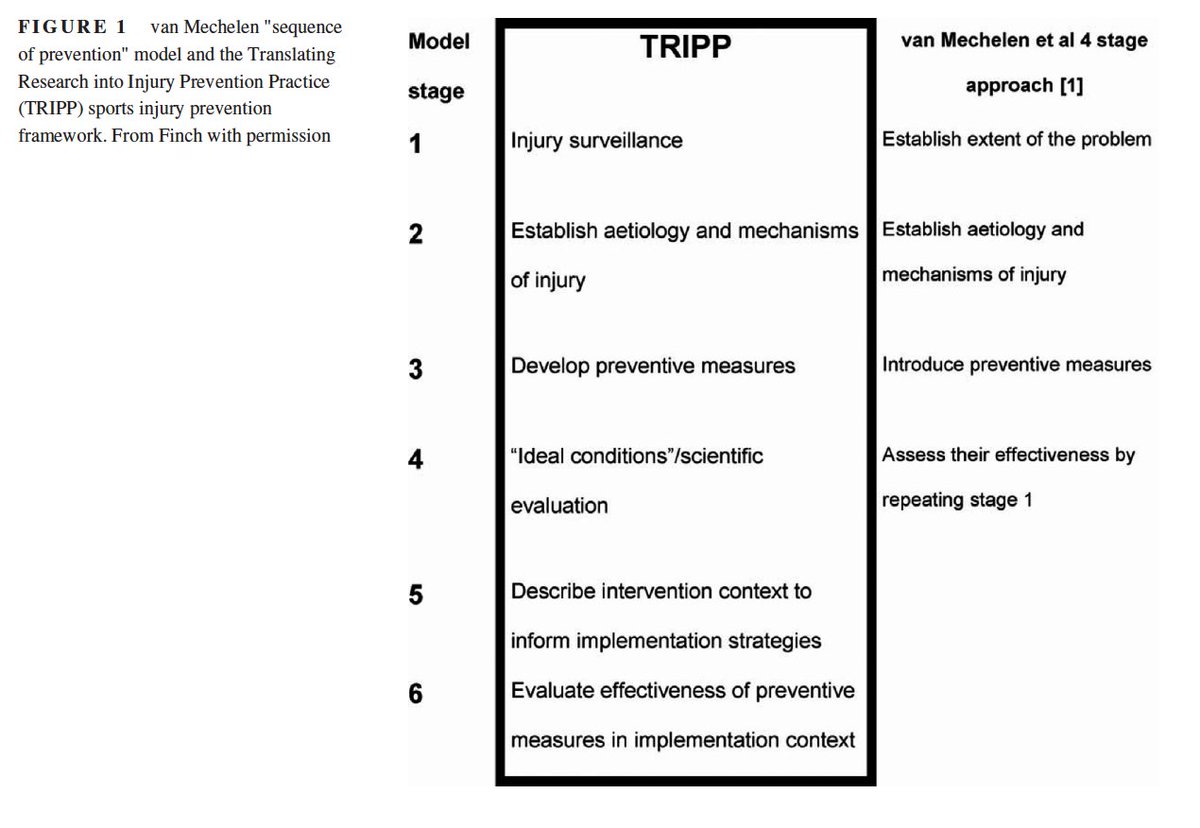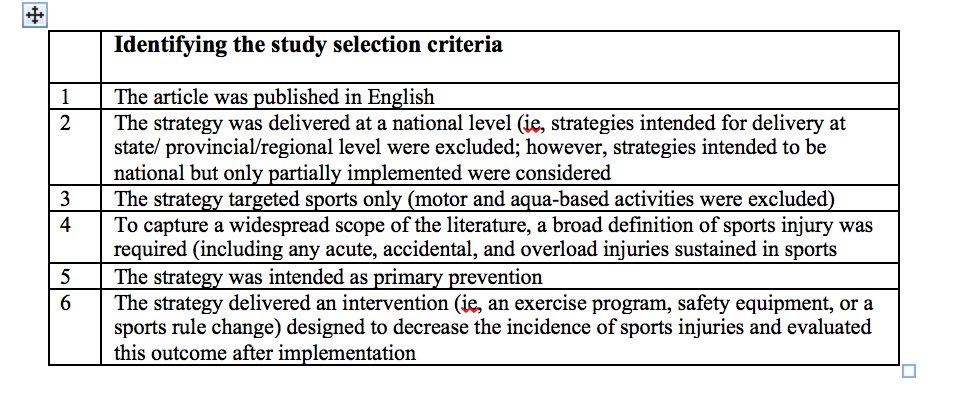Recently published in the Scandinavian Journal of Medicine & Science in Sports (early view)
“Nationwide sports injury prevention strategies: A scoping review”
A thread - please feel free to share!!
Co-authors: @AlexDonaldson13 and A/P Roslyn Poulos https://onlinelibrary.wiley.com/doi/abs/10.1111/sms.13858">https://onlinelibrary.wiley.com/doi/abs/1...
“Nationwide sports injury prevention strategies: A scoping review”
A thread - please feel free to share!!
Co-authors: @AlexDonaldson13 and A/P Roslyn Poulos https://onlinelibrary.wiley.com/doi/abs/10.1111/sms.13858">https://onlinelibrary.wiley.com/doi/abs/1...
Why do a scoping review, surely a systematic review is better?
-We were not looking to answer a specific clinically significant question
-Scoping review methodology allows a broader search of the literature
-We were not looking to answer a specific clinically significant question
-Scoping review methodology allows a broader search of the literature
Over the last decade, the effectiveness of neuromuscular training (NMT) programs to decrease the risk of lower limb sports injuries, several rules changes in sports and the use of protective equipment in sports has buoyed interest in nationwide primary prevention globally.
OUR AIMS:
1) Identify attempts at implementing nationwide sports injury prevention strategies
2) Discern the impact of these strategies
3) Map the nationwide efforts onto the TRIPP framework
1) Identify attempts at implementing nationwide sports injury prevention strategies
2) Discern the impact of these strategies
3) Map the nationwide efforts onto the TRIPP framework
We identified 1794 studies and included 33 studies (of 24 strategies).
The USA (n = 7), New Zealand (n = 4), Canada (n = 3), the Netherlands (n = 3), Switzerland (n = 2), Belgium (n = 1), France (n = 1), Ireland (n = 1), South Africa (n = 1), and Sweden (n = 1)
The USA (n = 7), New Zealand (n = 4), Canada (n = 3), the Netherlands (n = 3), Switzerland (n = 2), Belgium (n = 1), France (n = 1), Ireland (n = 1), South Africa (n = 1), and Sweden (n = 1)
We categorized the 24 strategies as follows: protective equipment recommendations (n = 8); multifaceted programs (n = 7); rule and policy changes (n = 6); and injury prevention exercise programs (IPEPs) (n = 3).
29 (88%) of the included studies demonstrating positive results BUT scoping review = no quality assessment of the studies!
Suggestions from the review:
1)Qualitative research methods could be a valuable tool to more comprehensively understand the sports injury context BUT Only three (9%) qualitative studies were included in the 33 studies meeting our inclusion criteria.
1)Qualitative research methods could be a valuable tool to more comprehensively understand the sports injury context BUT Only three (9%) qualitative studies were included in the 33 studies meeting our inclusion criteria.
Given the importance of the implementation context, researchers should consider early engagement with end users and context experts in the research process
Evaluations of large-scale strategies should report on the reach, adoption,and maintenance of interventions when possible.
Infographic to come .......

 Read on Twitter
Read on Twitter



